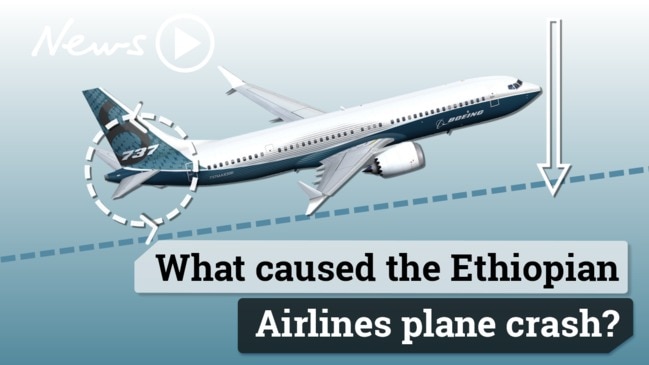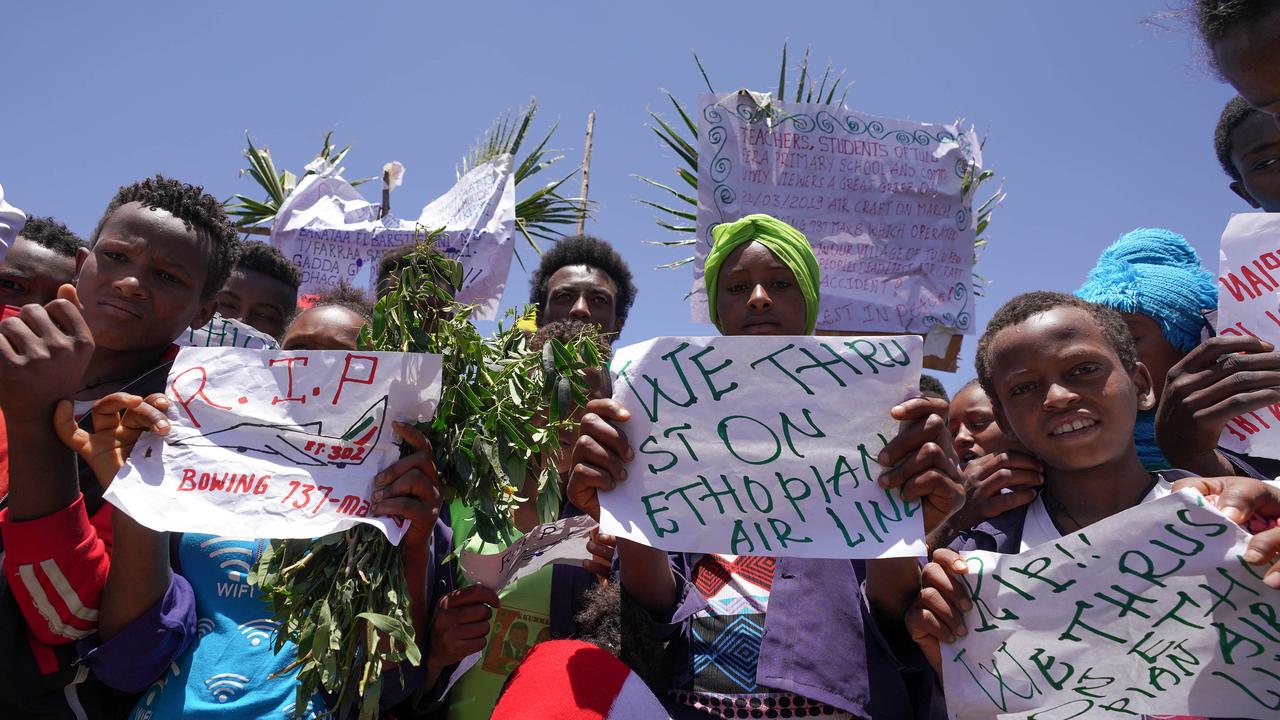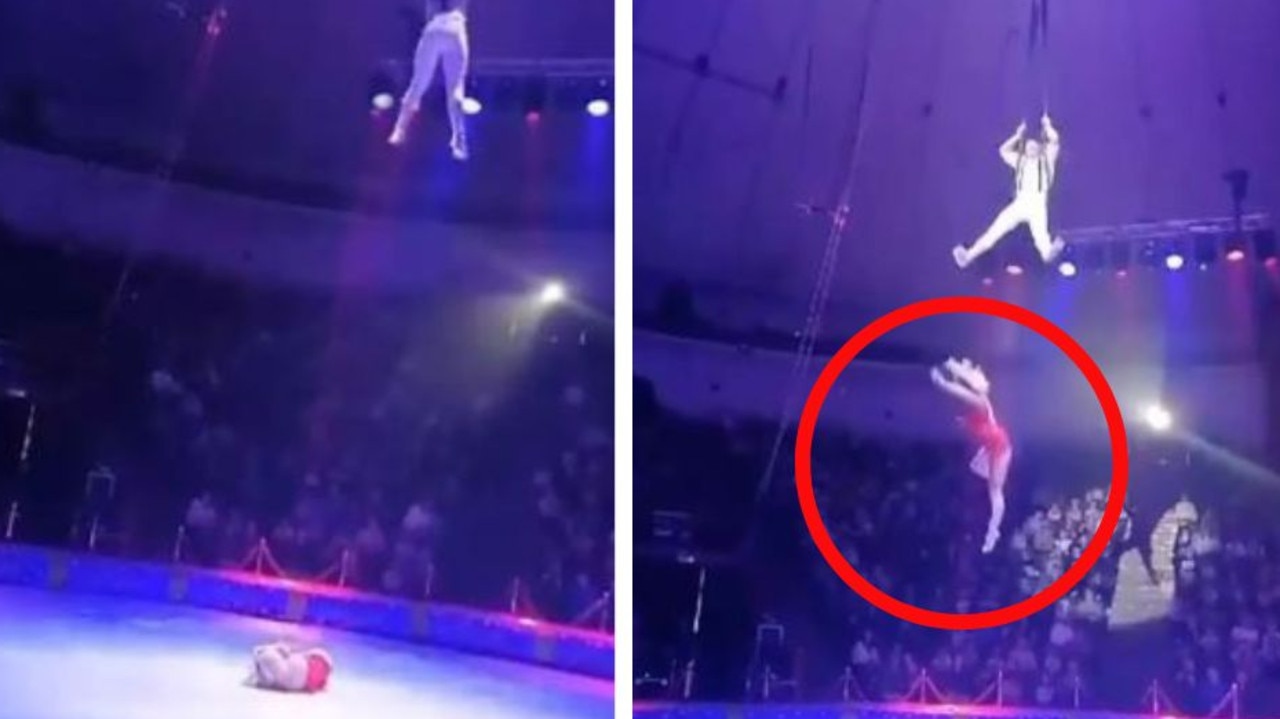Pilots had just 40 seconds to stop new Boeing 737 from nosediving
Worrying flight simulations show pilots on doomed Boeing 737 MAX flights had just seconds to stop the plane uncontrollably plunging to Earth.

Disturbing flight simulation observations have revealed that pilots have less than 40 seconds to override the software before a Boeing 737 MAX would uncontrollably plunge towards Earth.
Pilots from five airlines tested current and updated software on a Boeing flight simulator, which was used to recreate the problems with the doomed Lion Air flight which killed 181 passengers in October.
The New York Timesspoke to two unidentified people involved in the testing who told the newspaper that pilots could only flip one switch to reverse a move by the software to point the nose down.
And, the only way they could disable the software was by flipping two switches at their knees.
Pilots involved in the simulator testing followed those steps and kept the plane under control using the current anti-stall software, but it took them 40 seconds to do so.

Lion Air pilots, on the other hand, had received little training on the system and it was only after the plane crashed that Boeing first notified pilots of the system’s existence.
Jason Goldberg, a pilot who has flown the MAX 8 and is spokesman for the Allied Pilots Association, the union representing American Airlines pilots, said the anti-stall system “has significant control over the aircraft — it can pitch the nose down very significantly”.
He said it was “inexcusable for Boeing to omit this information from the pilot manuals for training. It’s a serious breach of trust.”
Following the March 10 Ethiopian Airlines crash that killed 157 people, Boeing 737 MAX fleets have been grounded around the world.
On Saturday, Boeing confirmed that updated software will rely on data from more than one sensor before it automatically pushes the nose down.
The system won’t repeatedly lower the nose as it seemed to do with Lion Air, and the software-controlled movement won’t be as abrupt. The update must be approved by the FAA and other countries’ regulators.
“We’re hopeful that Boeing will come up with a fix, but the process can’t be rushed,” Mr Goldberg told reporters.

He wouldn’t discuss Saturday’s simulator testing but said the union is pleased that Boeing and the FAA are taking input from pilots in testing the fix.
Ethiopian Airlines, widely seen as Africa’s best-managed airline, had been using five of the Max 8 planes and was awaiting delivery of 25 more. The airline has not made a decision on whether or not to cancel that order.
ETHIOPIAN AIRLINES CRASH REPORT LOOMING
A preliminary report on the Ethiopian Airlines crash will be made public soon, but it may take months to finish the final report, a spokesman for the country’s transport ministry said.
“A date has not been set but it will be released later this week,” Mussie Yiheyis told AP overnight, adding that a high-ranking government official will announce the preliminary result.
“The U.S. National Transportation Safety Board, France’s BEA and an Ethiopian Transport Ministry department have been conducting the investigation,” he said.
“It has been conducted as per International Civil Aviation Organisation rules and regulations.” On Monday, Ethiopian Airlines’ CEO Tewolde Gebremariam said the pilots who flew the plane that crashed on the outskirts of the capital, Addis Ababa, had trained on “all appropriate simulators,” rejecting reports that they had not been adequately prepared to handle the new aircraft.
There is evidence that anti-stall software could have contributed to the crash as well as to the crash of another Boeing 737 Max, a Lion Air flight in Indonesia in October.
Regulators say both planes had similar erratic flight paths shortly after take- off, an important part of their decision to ground the roughly 370 Max 8 planes around the world.

The preliminary report could come as early as Wednesday, the date that the U.S. Senate Commerce Committee’s aviation subcommittee has scheduled a public hearing on federal oversight of airline safety.
Daniel Elwell, acting Federal Aviation Administration administrator; Calvin Scovel, the Transportation Department inspector general who is investigating approval of the Max; and Robert Sumwalt, chairman of the National Transportation Safety Board, are scheduled to testify, but not anyone from Boeing.
Senators’ questions likely will focus on how much the FAA knew about anti-stall software on the Max that was not disclosed to airlines and pilots until after the Lion Air crash, and why it approved the software. It’s the focus of investigations into both crashes because the technology automatically points down the nose of the plane to avoid an aerodynamic stall, and there’s evidence that pilots of both jets struggled to deal with it.
On Tuesday, U.S. House Transportation Committee Chairman Peter DeFazio, D-Oregon, urged the FAA to have an independent third party review software changes that Boeing is making on the Max to ensure it is “comprehensive and that pilots have the information and training they need to fly the aircraft safely.”



